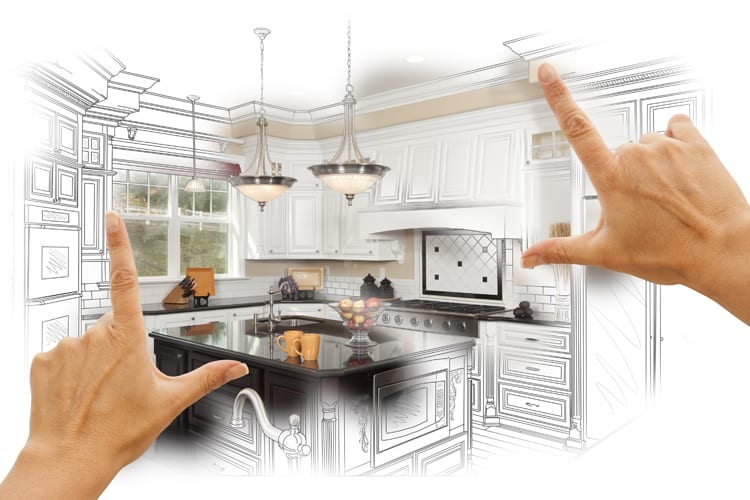Key Takeaways
- Understanding the significance of sustainability in kitchen design.
- Identifying critical components that make a kitchen eco-friendly.
- How to implement green practices in kitchen renovation and maintenance.
Table of Contents
- The Rise of Eco-Friendly Kitchen Designs
- Critical Elements of a Green Kitchen
- Color Trends and Eco-Aesthetics
- Innovations in Sustainable Kitchen Technology
- Space Planning for Efficiency and Mindfulness
- Making the Transition: Renovation Tips for a Greener Kitchen
- The Role of Certification and Standards in Green Kitchen Design
- Financing Your Green Kitchen
- The Community Impact of Sustainable Kitchens
- Continuing the Green Journey: Maintaining Your Eco-Friendly Kitchen
The Rise of Eco-Friendly Kitchen Designs
The sphere of home design is seeing a compelling shift as a reflection of the increasing awareness of environmental sustainability. The kitchen is explicitly transforming, as it is central to a home’s functionality and a focal point for resource consumption. Adopting green trend for kitchens is paving the way for environmentally conscious spaces without compromising beauty or efficiency. The modern green kitchen is a testament to how aesthetic appeal and eco-responsibility coexist harmoniously, from energy-saving appliances to non-toxic materials. The modern consumer is becoming increasingly environmentally savvy and is actively choosing to embed sustainability into their lifestyle choices. It has led to a demand for kitchen designs that minimize the ecological footprint through sustainable materials, efficient waste management, and energy conservation. The end goal is to create a kitchen that serves the homeowner’s needs and contributes positively to the broader environment.
Critical Elements of a Green Kitchen
The materials and technologies that come into play are integral to any eco-friendly kitchen. Responsible sourcing of materials, such as sustainably harvested wood for cabinetry or recycled composite countertops, notably reduces the environmental impact of a kitchen refurbishment. Incorporating energy-efficient appliances, certified by Energy Star or similar, further solidifies a kitchen’s green credentials, leading to reduced greenhouse gas emissions and better energy savings. Water-efficient fixtures, such as low-flow taps and dual-flush toilets, tackle precious water conservation meaningfully. Light itself plays a vital role in a green kitchen. The strategic use of natural lighting, supplemented with energy-saving LED lighting, minimizes electricity use and creates a warm and inviting atmosphere. This integration of functional, energy-conscious design with aesthetic considerations is the hallmark of modern green kitchens, setting an example of eco-intelligent living without compromising on the artistic vision of the space.
Color Trends and Eco-Aesthetics
The green kitchen movement extends into the realm of color psychology and aesthetics. A palette derived from the natural environment, emphasizing greens, browns, and earth tones, fosters a connection to nature while reinforcing the kitchen’s sustainable ethos. These choices go beyond color preference; they express a commitment to ecological sustainability that aligns with the wellness trends permeating home design today. These aesthetics are pleasing to the eye and have tangible benefits, too. The calming effect of a nature-inspired palette can make the kitchen a serene retreat within the home. Furthermore, when natural colors are used alongside greenery and plants, they accentuate the room’s sustainability features. For a splash of inspiration, taking a cue from other green kitchen examples can provide valuable insight into effectively blending color trends with environmental considerations.
Innovations in Sustainable Kitchen Technology
The technologically advanced green kitchen is where convenience meets conservation. Cutting-edge appliances like smart refrigerators and ovens can reduce energy consumption through intelligent functions like self-regulating temperatures or cooking modes. Composting has also been revolutionized within the green kitchen, with new systems making the process cleaner, easier, and more accessible, thereby promoting waste reduction and nutrient recycling.
Space Planning for Efficiency and Mindfulness
A truly green kitchen promotes efficiency and mindfulness at its core, from layout to everyday use. Thoughtful space planning is about more than just aesthetics; it’s about functionality with a conscience. It involves integrating areas for recycling and composting into the design, choosing appliances that promote energy and water efficiency, and organizing the space to make sustainable habits second nature. It’s about fostering an environment that encourages and facilitates eco-friendly behaviors.
Making the Transition: Renovation Tips for a Greener Kitchen
Embarking on a green kitchen renovation can be an exciting venture, and the road to a more environmentally friendly space can be navigated with a series of well-planned steps. Simple changes like swapping out single-use plastics for sustainable alternatives can have an immediate impact. At the same time, more extensive projects such as installing solar panels or investing in biodegradable materials can redefine a kitchen’s environmental footprint for years to come.
The Role of Certification and Standards in Green Kitchen Design
Certifications are vital in ensuring a kitchen’s green features are up to par. These third-party verifications offer assurance that products and practices adhere to strict environmental and efficiency standards. Certifications, such as those from the Leadership in Energy and Environmental Design (LEED) program, provide guidelines for reducing carbon footprints and enhancing indoor air quality through non-toxic finishes and proper ventilation.
Financing Your Green Kitchen
The considerations for financing a green kitchen are unique due to the focus on long-term savings and sustainability. Environmental rebates, incentive programs, and green loans are options for homeowners looking to offset the initial costs of eco-friendly appliances and materials. These investments often result in lower utility bills, increased home values, not to mention the invaluable benefit to the planet.
The Community Impact of Sustainable Kitchens
A green kitchen’s influence isn’t confined to the walls of a home; it extends to the local community and beyond. Environmentally conscious choices like supporting local artisans and food producers can ignite a cascade of sustainable practices within a community. As neighbors and friends take cues from these green spaces, sustainable living gains momentum, creating a collective impact that resonates across regions and contributes to global sustainability goals.
Continuing the Green Journey: Maintaining Your Eco-Friendly Kitchen
After installing a green kitchen, the journey towards a sustainable lifestyle continues. Maintaining an eco-friendly kitchen is about adopting practices that align with its design intentions. This includes using natural and biodegradable cleaning agents to avoid introducing harmful chemicals into the home and the environment, adhering to energy-saving techniques, reevaluating appliances and fixtures periodically for efficiency, and continually educating oneself on new ways to minimize a household’s carbon footprint.
In sum, the movement towards a green kitchen symbolizes a broader momentum towards sustainability. As more homeowners and designers embrace environmentally friendly kitchen concepts, the fusion of style, function, and ecological stewardship becomes increasingly sophisticated. With the right approach, a commitment to green living materializes in a kitchen that balances the pleasures of cooking and gathering with the responsibility of sustaining the earth.




